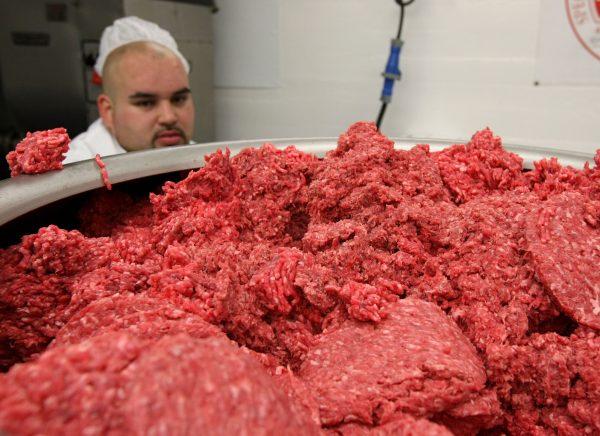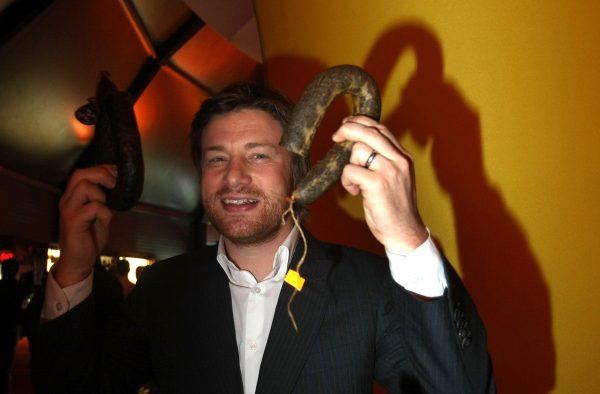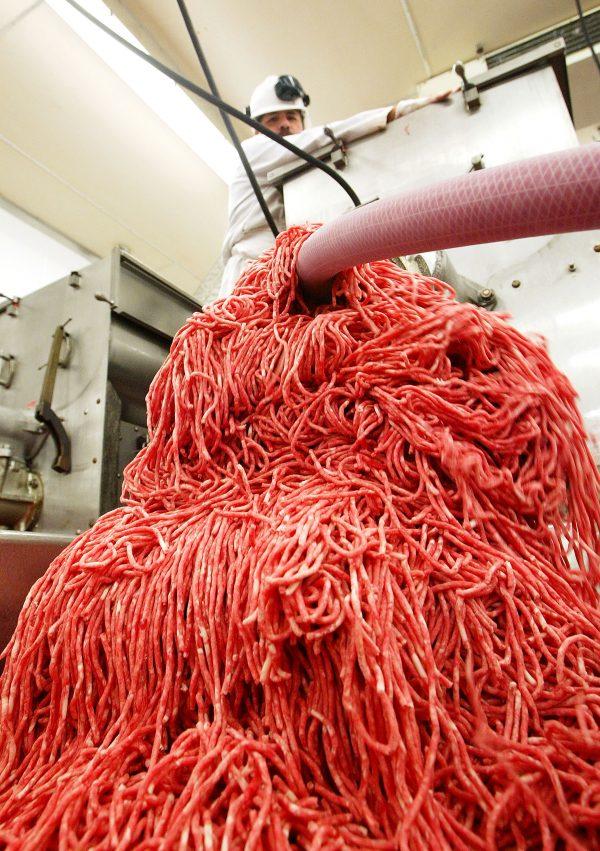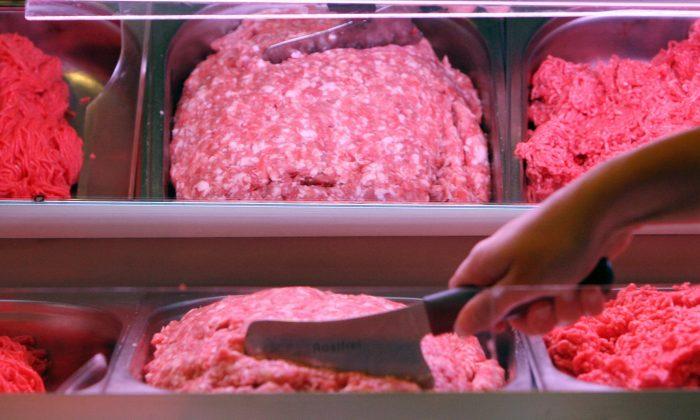A processed meat product pejoratively termed “pink slime” has been officially reclassified as “ground beef” by the United States Department of Agriculture (USDA).

Craig Letch, BPI’s vice president of sales and marketing, told the publication that the reclassification “opens up new doors for us,” adding, “This change will allow us to provide new and innovative types of products that our process lends itself well to.”
BPI spokesman Rich Jochum said at the time that the company would “continue communicating the benefits of BPI’s lean beef, but that process is much more difficult than (countering) the campaign to spread misinformation that brought us to this point.”
By “this point” Jochum was referring to the company’s announcement of three plant closures and the loss of about 650 jobs.
‘It’s Back’
Alarmist coverage of LFTB is exemplified in a video posted on YouTube by IMR Films showing a processing machine churning out a stream of pastel goo, with on-screen text identifying it as “pink slime,” describing it as a “concoction of beef and ammonium hydroxide McDonald’s was using as a base for its burgers,” before warning, “It’s back!”Activist celebrity chef Jaimie Oliver dove into the “pink slime” controversy in an April 2011 episode of his television show “Jamie Oliver’s Food Revolution,” in which he derided the use of beef that had been processed with the aid of liquid ammonia, saying, “So, basically, we’re taking a product that would be sold in the cheapest form for dogs, and after this process we can give it to humans.”

Oliver dramatized his point by dousing an armful of beef byproducts with liquid ammonia and running it through a meat grinder, with multiple camera shots of children in the audience reacting to his presentation with obvious revulsion.
What Is LFTB?
The American Meat Institute (AMI), an industry association, describes Lean Finely Textured Beef as “a category of beef products that uses high‐technology food processing equipment to separate lean meat from fat because doing it by hand would be impossible. LFTB products prevent the waste of valuable, lean, nutritious, safe, beef by using technology to do what hands cannot.”
“Lean finely textured beef adds 10-12 pounds of lean nutritious beef to every animal processed,” Capper said. “That means that to produce the same amount of beef for human consumption we’d need to process an extra 1.5-1.9 percent more cattle each year–that’s between 516,000 and 654,000 extra cattle in the U.S. per year.”
AMI addressed the ammonia controversy, saying, “Food grade ammonium hydroxide (basically ammonia + water), which has been declared safe by the Food and Drug Administration since 1974, is used to produce a number of products such as puddings and baked goods and can be used in the processing of boneless lean beef trimmings to control any harmful bacteria that may be present in the beef.”
It said that a “puff of ammonium hydroxide gas” is used to destroy bacteria that could make people ill if the beef is not cooked thoroughly, and that the USDA and the Food and Drug Administration consider the process safe.







Friends Read Free